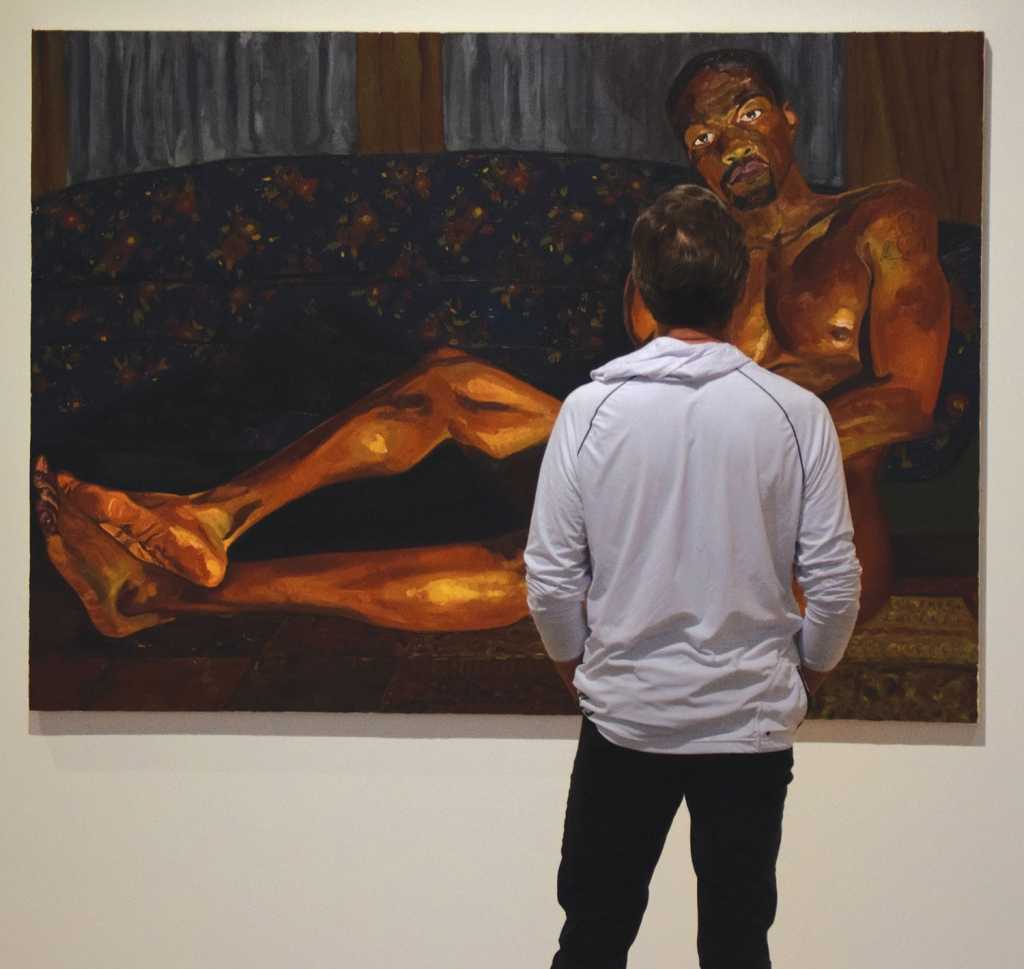Harlem-based artist Jordan Casteel’s first solo show at the Iris & B. Gerald Cantor Center for Visual Arts at Stanford University illustrates her development through four years of her art career, from 2013 to 2017. The exhibit is free to attend and is open until Feb. 2, 2020. The art is arranged in chronological order, showing her evolution from painting important figures in her own life to strangers.
Casteel is an artist and assistant professor at Rutgers University. She paints large-scale, figurative realism portraits of everyday scenes from her community.
Entering the exhibition at the Cantor Arts Center, Casteel’s first portraits greet the viewer. Continuing through her paintings, the subjects’ eyes stare back, calling the viewer toward them.
“I think that the thing that really grabs you in these paintings is the way that these viewers look back at you,” said Aleesa Pitchamarn Alexander, Cantor Arts Center assistant curator of American art.
Breaking stereotypes
Even Casteel’s choice of subjects defies stereotypes. Each of her series focuses on people not usually featured in fine art, but become compelling subjects.
Her earlier collections, “Visible Man” and “Brothers,” portray black men who Casteel had close relationships with, including family members and friends.
“I see the humanity and, in turn, I want audiences to engage with them … as individuals with their own unique stories to share.”
— Jordan Casteel, artist
They render these men through Casteel’s eyes, showing a humanity that is often lost to the pervasive racism and toxic masculinity of the outside world.
“The intent of the paintings from my early works is to expose my vision of black men as a sister, daughter, friend and lover,” Casteel said in an interview with the Cantor Arts Center in June. “That perspective is one full of empathy and love. I see the humanity and, in turn, I want audiences to engage with them as fathers, sons, brothers, cousins — as individuals with their own unique stories to share.”
Casteel focuses on interpreting her own experiences and her own reality, which is appreciated by people attending the show at the Cantor Arts Center.
“I think her work is very powerful,” exhibit attendee Liz Jessee said. “It’s really a reflection of a time and a place.”
Audio PlayerCommunity engagement
Casteel’s more recent paintings depict members of her society that she sees throughout her day, not only those she has a connection to.
“Nights in Harlem,” her 2017 series, details the area at night, while other subjects include women, cityscapes and local business owners.
To paint these portraits, Casteel approaches strangers on the street, asks to take their photo and bases her art on those photos.
“We felt her message about emphasizing stopping and getting to know folks around you,” Alexander said. “Really paying attention to the importance of everyday life and the people that you will encounter in everyday life, and how we often take those encounters for granted.”
Audio PlayerCasteel’s approach to engaging with her neighbors is something that all viewers can take from the exhibition and incorporate into their own lives.
“I could go into a store and say ‘Well, hello, I live here. Do you live here?’” Rocky Blumhagen, a Stanford Fellowship Program student, said. “I think that’s really valuable … that anybody can take away. Are you really seeing the people in your community? Do you really see them?”
Audio PlayerRELATED STORIES
Jessica Lee: Exploring the art around us
Warhol Rediscovered: A photographic glimpse into the life of the renowned artist




